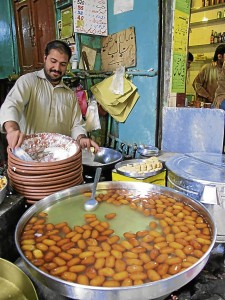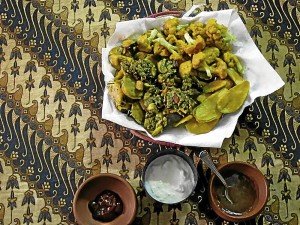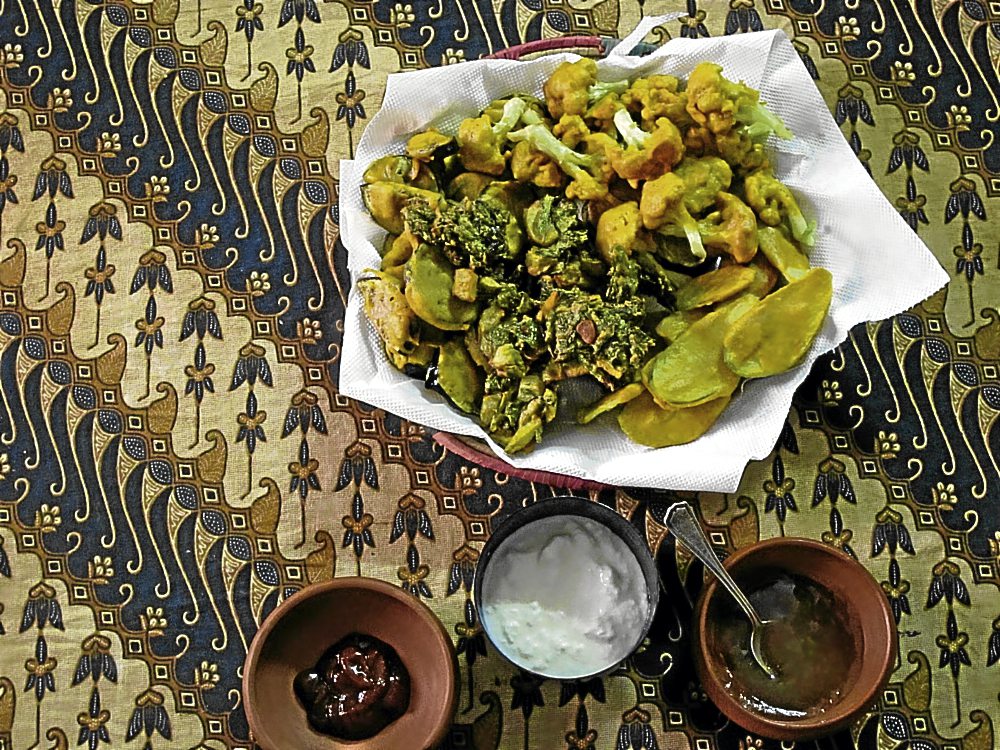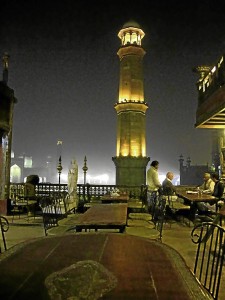 Many of my fellow diners have had to patiently listen—often in mid-morsel—while I belabored the fact that I love the spicy dish but couldn’t handle how it set my mouth on fire. On a week I spent in the ancient city of Lahore in Pakistan, I had many occasions to explain this point—in between hasty gulps of water.
Many of my fellow diners have had to patiently listen—often in mid-morsel—while I belabored the fact that I love the spicy dish but couldn’t handle how it set my mouth on fire. On a week I spent in the ancient city of Lahore in Pakistan, I had many occasions to explain this point—in between hasty gulps of water.
Lahore, the capital of the province of Punjab, was once among the great cities of the Mughal Empire. With Kabul, Delhi and Agra, it was the site of many grand edifices erected by the Mughal emperors.
As venue of an imperial court, it is expected that Lahore would develop a cuisine of elaborate concoctions as demanded by a regal palette.
This may well be the case, but during my stay in this fabled metropolis, I had the chance to savor only more modest fare. As my friend, Dr. Richard Engelhardt explained, most meals in Pakistan today center on roasted meats and simple but tasty stews.
Uncomplicated
My first memorable culinary encounter would cap a fascinating tour of the splendid former palace of Lahore. We had been invited to lunch by Dr. Saleem ul Haq, a senior official of the archaeology department of Punjab who held office in the palace.
Having fully satiated my eyes with the marvels that I had just seen, it was finally the turn of my stomach!
I was not disappointed: lunch turned out to be uncomplicated but delicious. The chicken and mutton stews were rich and fulfilling. As to be expected, every mouthful burned my tongue but there were cucumbers and there was yoghurt to cool things down.
In countries like India and even Malaysia, meals include both bread and rice. Dr. Saleem’s lunch was no exception. We had round bread still steaming, fresh from the oven. We also had a delightful plate of rice interwoven with vegetables.
The woman sitting next to me kindly explained that there were two main types of rice dishes: the biryani and the pulao. What we were having was a pulao which was cooked by layering the grains with the accompanying greens in a pot for steaming.
Biryan involved sautéing diced meat with various spices to form a kind of paste. Then the rice was folded in and blended.
Warm and gooey
At the end of the meal came a scrumptious dessert: gajar ka halwa. It was warm and gooey, sticky and soft. It was like a golden porridge except that one could not have the entire bowl.
When it was revealed that gajar meant carrot indicating the principle ingredient which was mixed with milk and nuts, Richard noted that his sons would not have been pleased. They would have been mortified to learn that our dessert was made from one of the nutritious food items which is on all children’s lists of things to avoid!
Richard also pointed out that while Pakistani fare consisted mostly of basic stews, it was in the dessert department that one could get a hint of the opulence of the Mughal era. In the days that followed, I would grow to be grateful for this fact.
Since most dishes were a little too fiery for me, I often had to content myself with wolfing down considerable quantities of bread as well as sweet confections.
I began to look forward to our tea breaks when we could gorge ourselves on a galaxy of biscuits. Laid out on oval platters set on a tablecloth the color of turmeric were pyramids of chocolate wafers and cookies topped with almonds. My favorite was a crumbly delight that hinted of pistachios but also of shady courtyards and marble pavilions. I insisted on buying a couple of trays of these biscuits to take back home.
‘Pakora’
On one occasion, our hosts, Rustam Khan and Pamela Rogers, graciously prepared for us a welcome treat: pakora! This consisted of vegetables plunged in batter and then fried. For dipping, there were bowls of yoghurt and chutney. I was reminded of tempura which, I had read somewhere, was introduced to the Japanese by the Portugese. Yet, so similar is tempura to pakora that one wonders if it was the Portugese that had done the copying. After all, they had maintained a number of colonies on the Indian Sub-continent.
I would later discover that pakora was also on sale at stalls in the streets. When we explored the oldest district of Lahore—the Walled City—we would find that a dizzying panoply of snacks was available everywhere.
With the pakora were the meat-filled dumplings known as samosas. There was corn on the cob, as well as a kaleidoscope of patties and fried tidbits for nibbling. Most of all there were sweets. One shop had vats of my all-time favorite: gulab jamun. These are like our own pastillas de leche except that a syrup suffused with rose water and cardamom is added. Such luxury!
meat-filled dumplings known as samosas. There was corn on the cob, as well as a kaleidoscope of patties and fried tidbits for nibbling. Most of all there were sweets. One shop had vats of my all-time favorite: gulab jamun. These are like our own pastillas de leche except that a syrup suffused with rose water and cardamom is added. Such luxury!
And if the gulab were not enough, another store tantalized with more plates of candies displayed on tier after tier, a stairway of sweetness rising to confectionary heaven.
Stew of jelly-like milk
Our goal in the ancient district was a restaurant that was famed for serving just one dish—the nihari. This is a stew made of mutton and other odds and ends. It is prepared in the wee hours and left to simmer for hours so that the meat becomes almost jelly-like.
The stew is served with piles of bread which, once again, I gratefully devoured since nihari was much too piquant for me.
One night, we trekked out to another famous establishment housed in a large mansion that faced the old city. Eccentrically furnished, it was filled with bric-a-bracs and paintings as well as winding staircases and mysterious doorways.
Reaching, the rooftop dining area, I was in for a great surprise. Stretching before us, even as we sat at our tables, was the most amazing view: the Badshahi Masjid, one of the largest historical mosques in the world. I was speechless. How often does one have an illuminated minaret towering over you while you are having dinner? Yes, I am afraid that I have absolutely no recollection what we ate that evening.
Final meal
Much more memorable was our final meal in Lahore. We were taken to this restaurant which served what was onomatopoeically referred to simply as takatak. This is in reference to the sound that the cooks make as they chop up the meat on a metal container with special knives.
What was especially interesting to me though was not the signature takatak but a secondary dish we were also served. It was something called chicken atchara. As is the case in the  Philippines, atchara means pickle.
Philippines, atchara means pickle.
I found that this splendid stew had just the right balance of sweet and sour, spice and tang—truly a combination after my own heart!
It seemed that Pakistan cuisine could make concessions to those of us whose tongues are less fortified.
Returning to Manila, I happily sat down to a meal that had been prepared to welcome me. I laughed as I added several dashes of soy sauce: perhaps things were beginning to taste too bland for me after a week dominated by the flame-like flavors of the Sub-Continent. I quickly opened the biscuits that I had brought back.
Sadly, even these did not taste the same. Perhaps I missed the yellow table cloth the color of turmeric. Then again it could have been the fact that there was not even a single minaret in view.










































